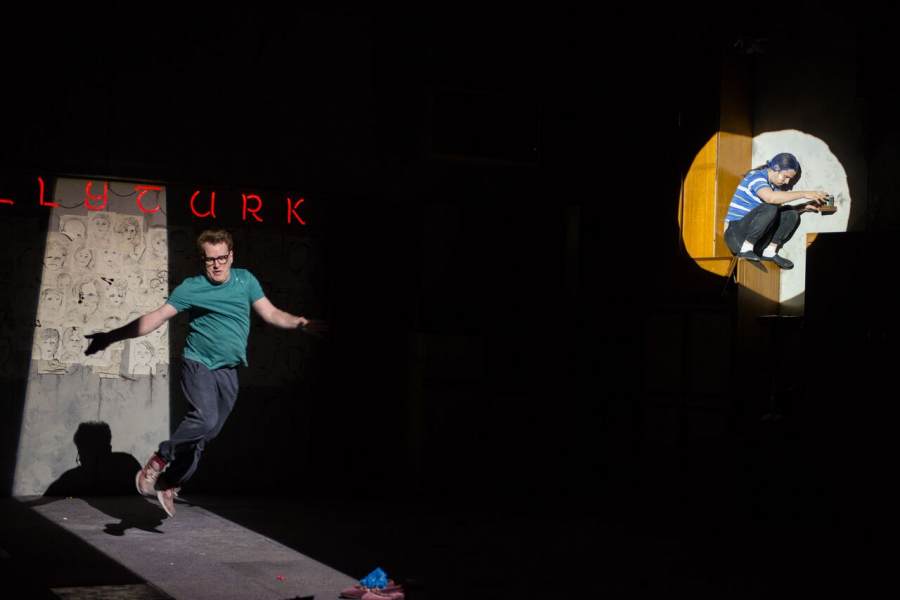

I’m still not sure what to make of Ballyturk, Enda Walsh’s play currently making its American debut at St. Ann’s Warehouse. I’d also maintain, however, that while there is an often frustrating incoherence, this does not diminish the emotional punch thrown by the performance’s climax. On the night I saw the show, the audience was in its grasp through the duration -- either by punctuations of laughter or the gravity of collective silence.
We begin with two men, unnamed, in what appears to be a rundown, barren flat. Dank, worn, anonymous, the left wall is covered with drawings, semblances of faces and plots of a town, but lacking those details that make a representation worthy of note. That is, if art, a representation, can be judged by its resemblance to something real or if memory, that recollection can be judged by its faithfulness to the original. There isn’t enough detail to determine if either of these is the case, but the flatness of depiction, as if either failing to draw it into existence or recalling it from a distant place, is tangible.
1 (Tadhg Murphy) and 2 (Mikel Murfi) might as well be children playacting. They recall dreams, nightmares, and after selecting the characters from the town of Ballyturk (by throwing darts at a wall of drawn faces), they play the citizens of Ballyturk going about their everyday, visiting a village shop. The premise is always the same--going in for something to buy--but what follows could become surrealistic horrifying or entertainingly provincial. Murfi is fantastic in his mimicry of the town’s characters. There is one sequence in particular that was astounding--Murphy listing names and Murfi snapping into each character, circling himself as if he’s a mold meant to exist as someone else and never himself. It’s a display of irreverent slapstick and a showcase of Murfi’s unquestionable talent. He is as goofy in Ballyturk as he is devastating, beginning as a man covered in baby powder and only in his underwear, like a statue waiting to be animated, and ending in far less comedic territory.
Ballyturk elicits more questions than it answers in its 95-minute running time. Where is ‘in here’? Why are they compelled to act as Ballyturk? Why has the wall, holding the faces of Ballyturk fallen down and brought in the stunning, enigmatic 3 (Olwen Fouéré), sermonizing on life and age, then providing them with an ultimatum? I couldn’t help but think of Walsh’s previously housed play at St. Ann’s, Arlington, and the themes he is revisiting in Ballyturk: existence, free will, and what it means to “be” are repeated here; as is their relationship to art and life. Be prepared to be thrown off your axis. It is a noteworthy experience, but you’ll land a bit disoriented when the house lights go up.